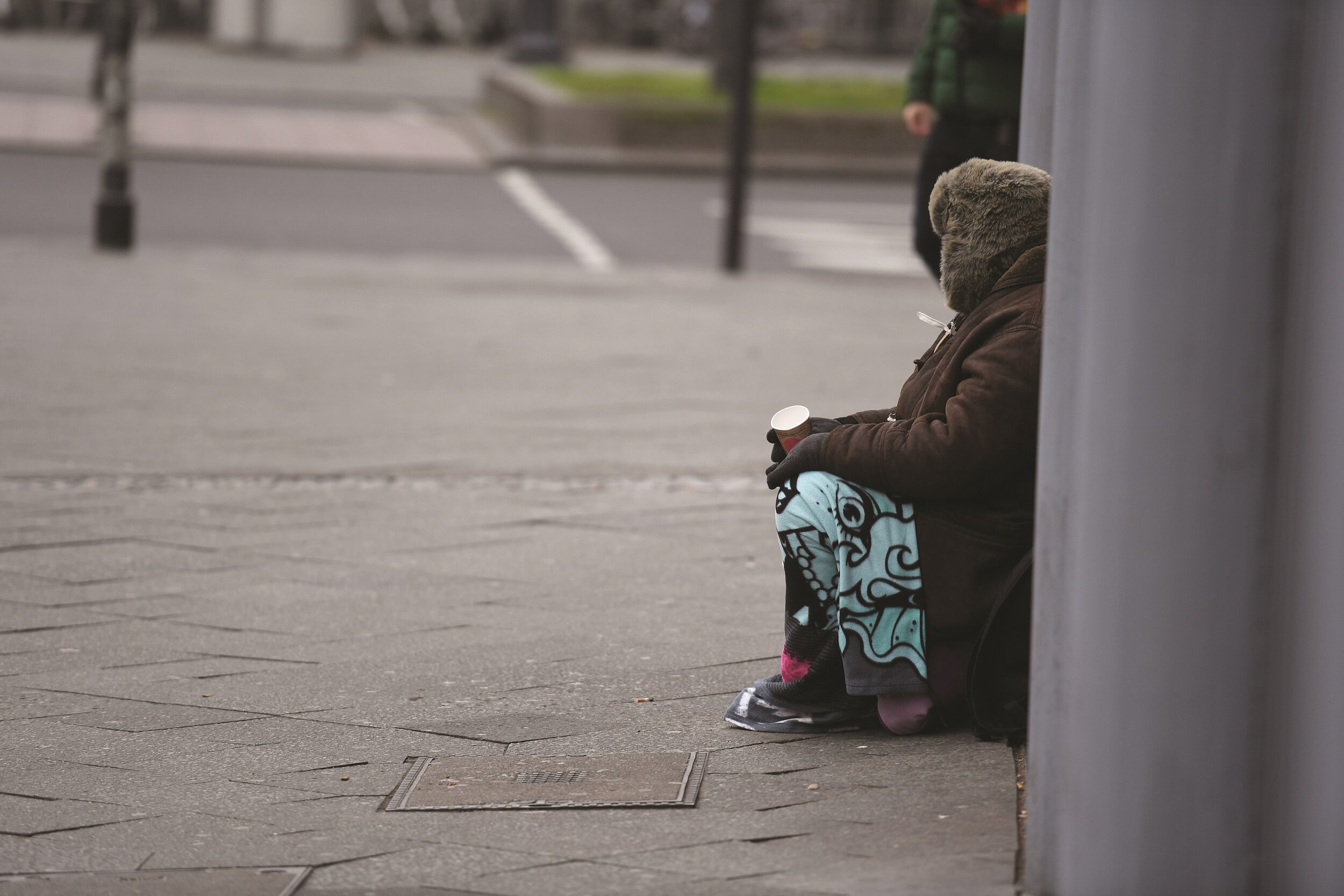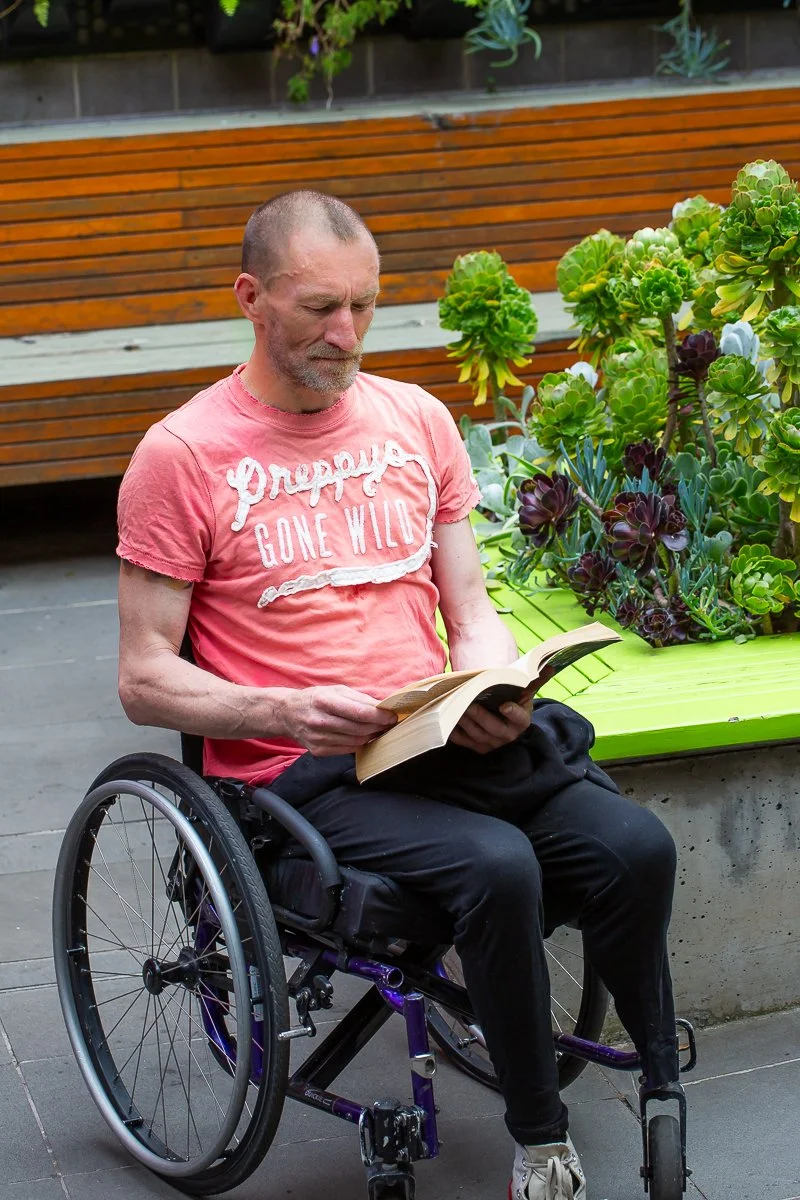
About Homelessness
Homelessness Can Happen to Anyone
Each day, St Mary’s House of Welcome opens its doors to around 200 of the most marginalised and isolated people in our community - people experiencing chronic homelessness and disadvantage, many with persistent mental health and addiction issues; people who have nowhere else to go.
Our open-door policy means that anyone who needs help can come to the centre for practical assistance. Whether it’s a meal, a shower and a change of clean clothes or other material aid, or more specialist support such as information, referral to access specialist services, legal support and housing assistance or emergency relief.
What is Homelessness?
The Australian Bureau of Statistics (ABS) definition states that when a person does not have suitable accommodation alternatives they are considered ‘homeless’ if their current living arrangement:
Is in a dwelling that is inadequate; or
Has no tenure, or if their initial tenure is short and not extendable; or
Does not allow them to have control of, and access to space for social relations.
The ABS definition of homelessness is informed by an understanding of homelessness as ‘home’lessness, not ‘roof’lessness. These elements may include: a sense of security, stability, privacy, safety, and the ability to control living space. Homelessness is therefore a lack of one or more of the elements that represent ‘home’.
In other words, while someone may have a roof over their head, they can still be classed as homeless if their housing is inadequate or inappropriate.
There are three main types of homelessness
The definition is based on the premise that concepts of homelessness and housing are culturally bound, and that in order to define homelessness it is necessary to identify shared community standards about minimum housing.
Primary Homelessness
Experienced by people without conventional accommodation (e.g. sleeping rough or in improvised dwellings).
Secondary Homelessness
Experienced by people who frequently move from one temporary shelter to another (e.g. emergency accommodation, youth refuges, “couch-surfing”).
Tertiary Homelessness
Experienced by people staying in accommodation that falls below minimum community standards (e.g. boarding housing and caravan parks). This definition was adopted by the Commonwealth Advisory Committee on Homelessness in 2001 and is widely used in our sector.
Myths About People Facing Homelessness
-
Homelessness is a multidimensional and complex problem. It is the product of a variety of interwoven structural and individual factors such as lack of adequate and affordable accommodation, loss of employment, sexual abuse, hazardous drug and alcohol use, grief and loss, domestic violence, family breakdown and mental health. No one chooses to be homeless.
-
Many of those affected by homelessness go on to resume productive employment, become stabilised in housing once secured and enter into voluntary work.
-
The majority are poor and have experienced a health problem or a financial shock, or cannot stay at home because of violence or abuse and cannot afford alternative accommodation.
-
About 60 per cent of people who are homeless do not have a drug or alcohol problem and of those that do, the majority develop this after they become homeless.
-
At present, if you show up at any homelessness service in Melbourne looking for crisis accommodation you will be unlikely to find a bed for the night. Crisis accommodation is almost always fully booked. It can take weeks or months to obtain a crisis bed. Unfortunately, this has been true for many years.
There are fewer than 400 crisis accommodation beds for adults in Melbourne. Yet there are about 23,000 people without permanent housing in Victoria. We also know that about 8000 people are living in unsafe and inappropriate dwellings, from back garden sheds to ramshackle houses without power or water.
A staggering 30,000 people are on the Victorian public housing waiting list.
Sources: ‘Homeless in the City, Exploring Myths and Facts’; Prof Guy Johnson RMIT; Council for Homeless Persons
-

Experiencing Homelessness
Although rough sleeping is a growing issue across Australian communities, the most common way that people experience homelessness is ‘severely overcrowded’ dwellings, and moving around between other kinds of insecure accommodation. This journey is often unsafe, and creates new risks for the health and wellbeing of those effected.
- 7% are rough sleeping, often for a short time
- 15% are boarding and couch surfing
- 18% are in supported accommodation
- 44% are in overcrowded dwellings
-

Causes of Homelessness
Family violence and a lack of affordable housing are the main contributors to homelessness. Other contributors include poor mental health, family breakdown, debt, poverty, leaving state care, or leaving prison.
- 13% suffer from mental illness
- 14% sudden loss of employment
- 34% escaping domestic violence
- 54% unable to afford housing
-

Homelessness in Melbourne
There are around 23,000 people who are homeless in Victoria.
The Sleep Count Survey of rough sleepers taken in June 2018 found 400 people sleeping rough in inner Melbourne suburbs – many of whom were on the waiting list for public housing.
- Around 80% were male and most were born in Australia
- 14 % had been transient for more than five years
- Homelessness costs Victoria $94 million a year

